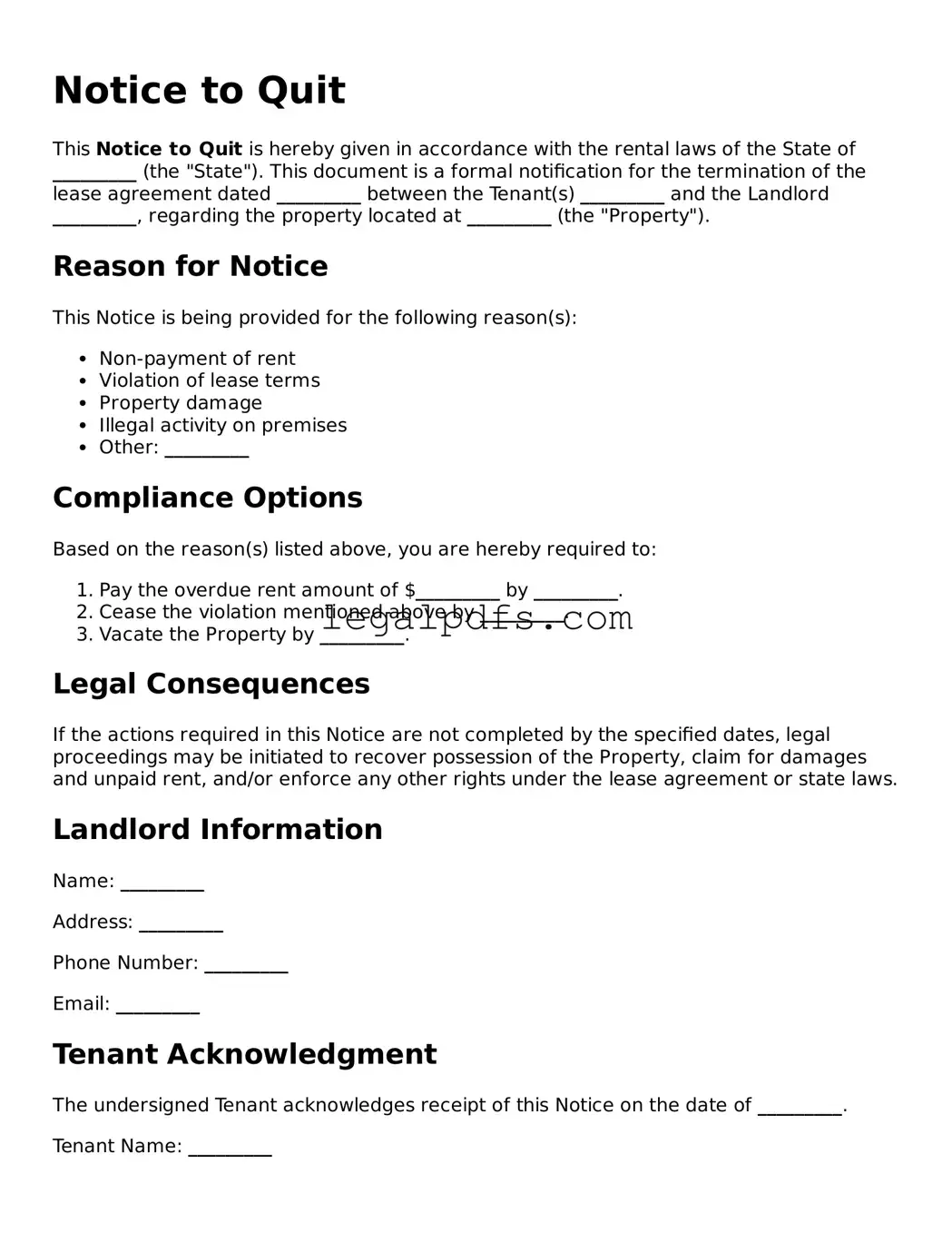What is a Notice to Quit?
A Notice to Quit is a formal document a landlord sends to a tenant to inform them that they must vacate the rented property by a specified date. This notice is generally issued due to a violation of the rental agreement, such as non-payment of rent or other breaches of the lease terms.
When is a Notice to Quit used?
A Notice to Quit is typically used when a tenant has not complied with the terms of the lease agreement. Common reasons include late or unpaid rent, damage to the property, or engaging in illegal activities on the premises. It serves as the first step in the eviction process, providing the tenant with a chance to remedy the situation or vacate the property.
How much time does a tenant have to respond to a Notice to Quit?
The time frame in which a tenant must respond to a Notice to Quit can vary by state and the specifics of the violation. Generally, the period can range from a few days to 30 days. It's crucial to check local laws to understand the specific requirements in your area.
What information should be included in a Notice to Quit?
A Notice to Quit should include the date the notice is issued, the tenant's name and rental property address, a detailed explanation of the lease violation, the time frame for the tenant to either remedy the violation or vacate the property, and the landlord’s signature. It may also include contact information for the landlord or property manager.
Is it necessary for a landlord to fill the "Notice to Quit" form to evict a tenant for non-payment of rent?
Yes, issuing a Notice to Quit is a necessary step in the eviction process for non-payment of rent. It officially informs the tenant of the issue and provides them with a chance to pay the overdue rent or face eviction proceedings.
Can a tenant dispute a Notice to Quit?
Yes, tenants can dispute a Notice to Quit if they believe it was wrongly issued or the claims within it are unfounded. They may seek legal advice, respond in writing to the landlord, or attend a hearing in court to present their case.
What happens if a tenant ignores a Notice to Quit?
If a tenant ignores a Notice to Quit and does not remedy the violation or vacate the property within the specified time frame, the landlord can proceed with filing for eviction through the court system. This may result in a legal order forcing the tenant to leave and potentially paying for the landlord’s legal costs.
How should a Notice to Quit be delivered to a tenant?
Delivery methods vary by state law, but common methods include hand delivery to the tenant, leaving the notice at the rental property in a conspicuous place, or using certified mail to ensure there is a record of receipt. It's important to follow the proper legal procedure for your jurisdiction to ensure the notice is considered valid.
Does a Notice to Quit need to be filed with the court?
Initially, a Notice to Quit does not need to be filed with the court. It serves as a preliminary step before filing an eviction lawsuit. However, if the tenant does not comply with the Notice to Quit, the landlord will then need to file an eviction action with the court to legally regain possession of the property.
